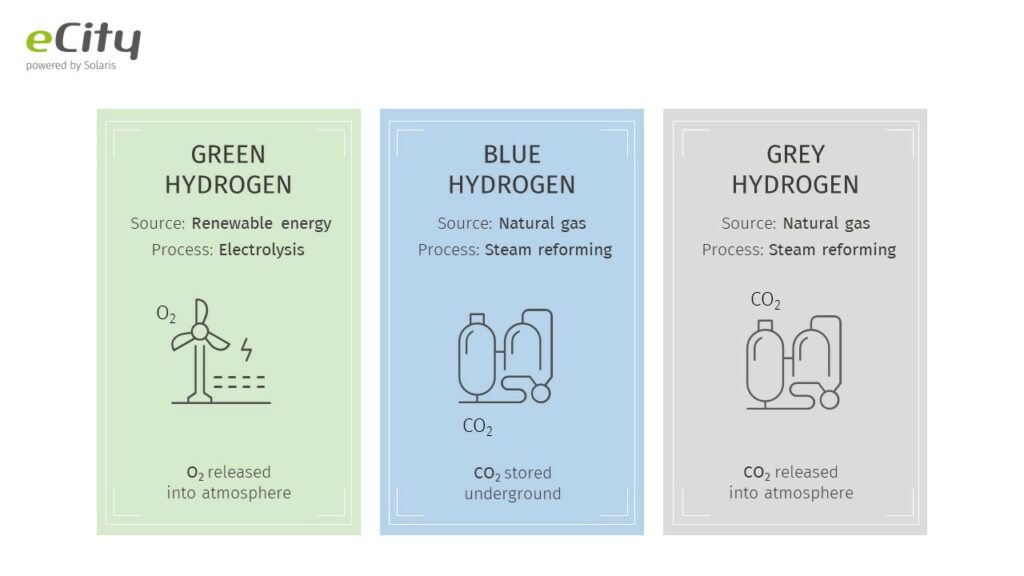
Which colour of hydrogen powers a bus?
The use of alternative fuels is an effective solution to the dwindling supply of fossil fuels. Among the options available, hydrogen, hailed as the fuel of the future, is coming to the fore. There is growing interest in its colour spectrum – grey, blue, green, yellow, red and even pink. But are there really so many shades of hydrogen? What is the real colour of hydrogen? Are all methods of extracting this element sustainable?
Actually, hydrogen is a … colourless gas, and the different colour names are colour codes that distinguish the method of its production:
- GREEN HYDROGEN is produced by electrolysis of water, i.e. splitting water molecules into two single elements: hydrogen and oxygen. It is important to note that only electricity from renewable energy sources is used in the process. The process produces no carbon dioxide emissions, so the hydrogen produced is completely carbon neutral.
- GRAY HYDROGEN still accounts for more than 95% of global hydrogen production. It is produced by steam methane reforming (SMR). In this process, natural gas or methane is reacted with steam at elevated temperatures. The result is not only hydrogen, but also carbon dioxide. This, together with all the ancillary processes involved in generating steam or heating the reactor, means that the production of hydrogen also involves a certain carbon footprint. However, this footprint is up to three times smaller than that of a coal-fired power plant.
- BLUE HYDROGEN is mainly produced from natural gas using the same SMR process, but in this case the carbon dioxide is captured and stored underground (CCS).
Blue hydrogen is sometimes referred to as ‘low carbon hydrogen’ because the steam reforming process does not completely avoid the production of greenhouse gases.

Other colours of hydrogen, such as black, brown, white or pink, are terms that cover other methods of hydrogen production (including the direct splitting of water with solar energy, i.e. photolysis of water) – but these are currently at very different stages of research and are not yet widely used.
What colour hydrogen is best for refuelling a bus?
Based on ISO standards, the fuel cells used in hydrogen buses require a hydrogen purity of 99.97%. This purity of hydrogen is most easily produced by electrolysis, so green hydrogen will be most applicable in this case. Importantly, we can also use hydrogen created in other production processes, but – as with gasification – the hydrogen must first be purified in another process (e.g. PSA – pressure swing adsorption), to achieve the right quality parameters. Only in this purest, compliant form is the hydrogen transported to the fuelling station.